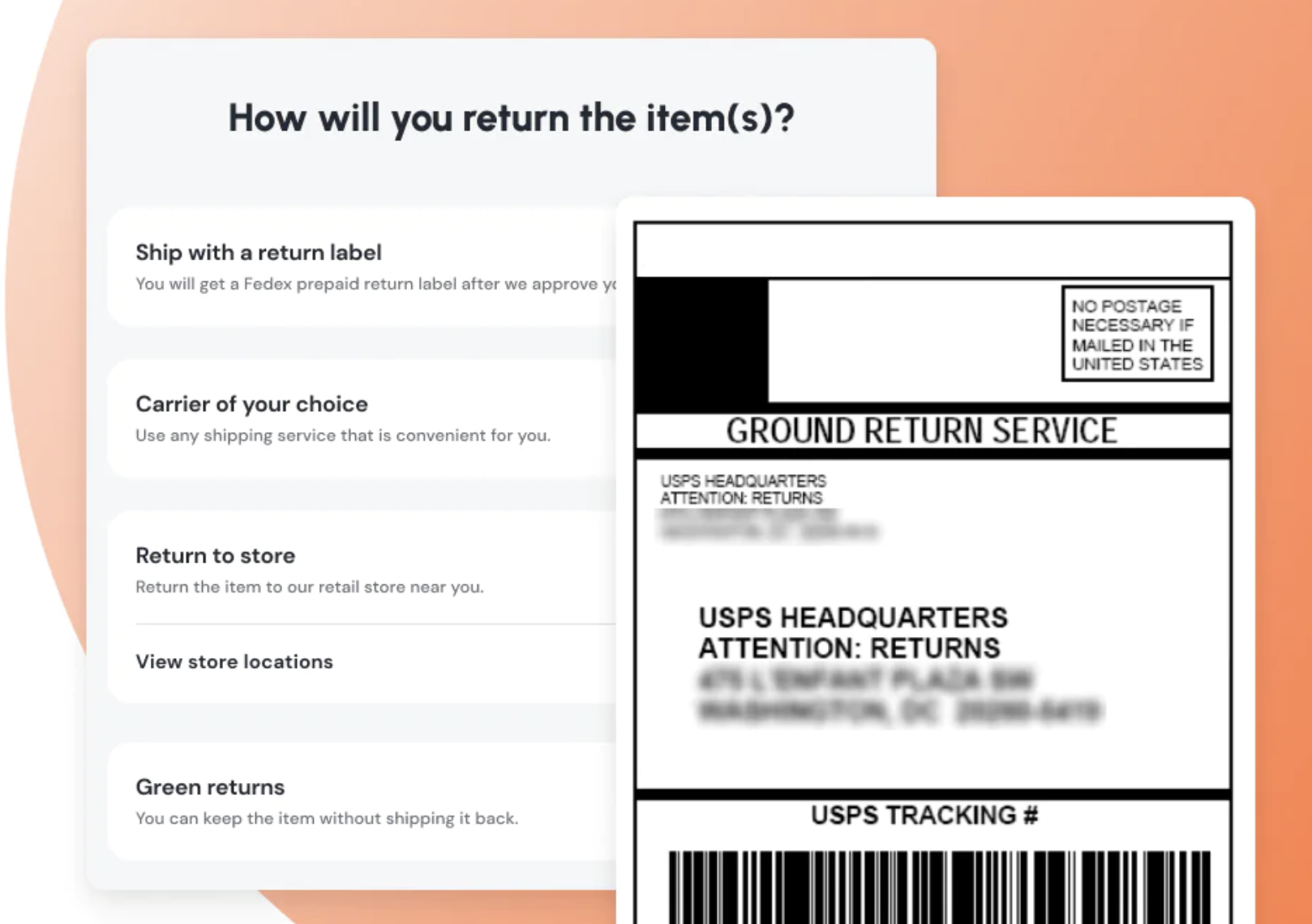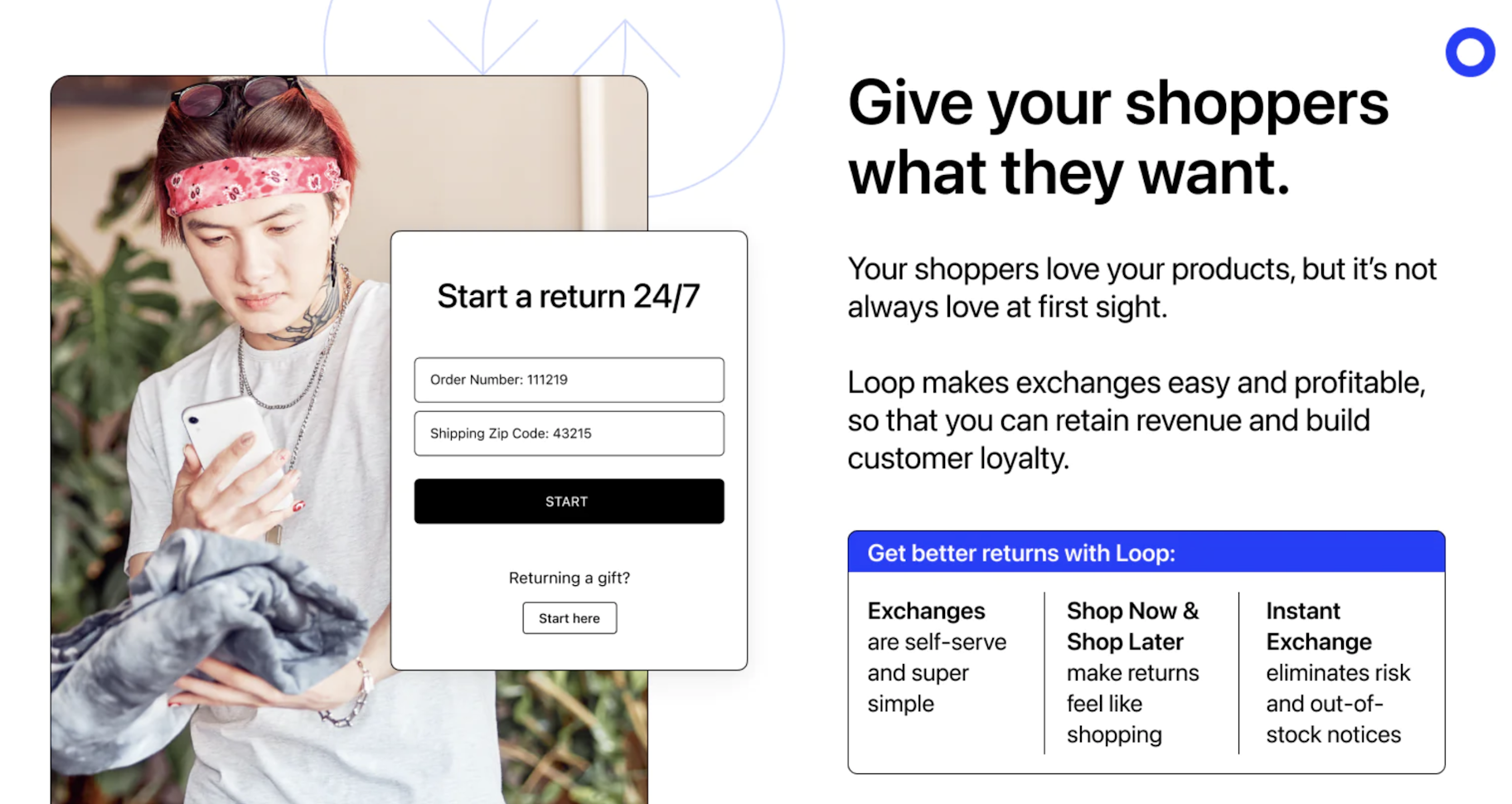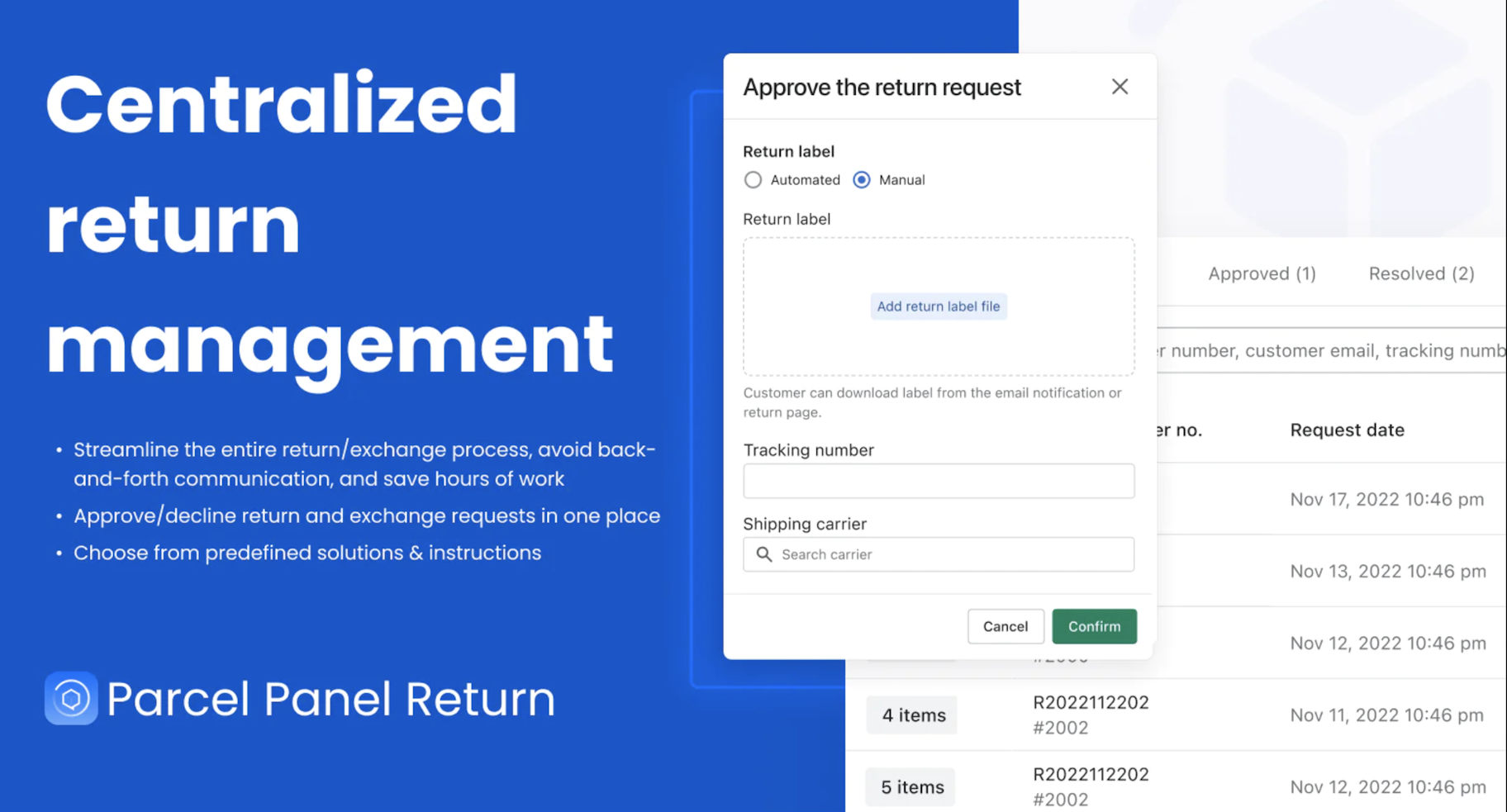How many times have you heard, “Returns are part and parcel of ecommerce?”
As 2024 unfolds, this phrase takes on a new weight. Mastercard forecasts retail ecommerce return volumes to swell by 5.9% year over year.
As an ecommerce merchant, this might seem like a hurdle in the path of smooth business operations. But don’t fret it, because an increase in returns is actually an opportunity for you to improve and innovate.
In this article, we’ll highlight some best practices you can use to tackle and reduce customer returns. Plus, you’ll learn about the average ecommerce return rate and best software for handling this process efficiently.



How important are returns in ecommerce?
Returns are a big deal in online shopping. If a store has an easy and flexible return policy, customers tend to be more loyal and keep coming back. On the other hand, a complicated or strict return policy might decrease customer lifetime value.
How does an ecommerce return work?
In ecommerce, customers usually have between 30 to 60 days to return their purchases. This time frame lets them decide if they want to keep an item or send it back.
Why do consumers return items?
PowerReviews conducted a survey to find out why consumers returned their online purchases. Eighty-one percent of people said they did it because the item was defective or damaged. Others cited the following reasons:
- Item doesn’t fit (75%)
- Item doesn’t match description (56%)
- Don’t like the product(s) (33%)
- Ordered multiple items/sizes (14%)
- Product arrived late (11%)
What is the average return rate for ecommerce?
The average ecommerce return rate is between 20% and 30%. The exact percentage may vary depending on factors like the type of products sold, the clarity of product descriptions, and the ease of the shopping experience.
Best software for streamlining ecommerce returns
If you’re using Shopify to manage your ecommerce business, there are several returns and exchanges apps in the Shopify App Store that can make your life easier.
These apps help with everything from keeping track of orders and getting your products shipped out to creating return labels and incentivizing customers for exchanges.
Here are some of the most popular ones.
1. AfterShip Returns

AfterShip Returns is an ecommerce returns management software renowned among brands like Watsons, Secretlab, and Gymshark. It streamlines the returns experience with features like a self-service returns page and automated email updates. These tools help reduce customer anxiety and enhance post-purchase satisfaction.
AfterShip Returns also offers dynamic features such as incentivized exchanges and refunds for store credit. This flexibility encourages customers to keep shopping, turning potential returns into new sales opportunities.
Moreover, the platform simplifies return management for ecommerce businesses with its centralized dashboard and rule-based automation.
2. Loop Returns & Exchanges

Loop is a great tool for managing returns if you’re using Shopify to run your business. It nudges customers to exchange items rather than returning them. With a simple click, they can swap an item for a different size or color, making the whole process a breeze.
What sets Loop apart is how it streamlines the entire refund process. When a customer requests a refund, the app analyzes the information from the return form and compares it with your store’s policies. Based on this, it automatically decides whether to approve or deny the refund. This automation speeds up the process and keeps your return procedures consistent and fair.
3. Parcel Panel Returns & Exchange

For online retailers dealing with international returns, Parcel Panel offers a practical solution. It simplifies one of the biggest headaches—creating return labels for cross-border shipping, making the task of getting packages through customs easier.
Strategies for handling ecommerce returns
1. Send returns back to your warehouse
Encourage customers to return items to your warehouse, but add a unique touch. For instance, consider setting up a system where customers can schedule a home pickup for their returns. This convenience—especially for bulky or delicate items—can be a deciding factor for customers choosing your brand.
Another tip is to form partnerships with local businesses to serve as drop-off points for returns. This strategy can significantly reduce the workload on your warehouse. Instead of handling a multitude of individual returns, your warehouse can deal with consolidated shipments from these local return hubs.
2. Return to brick-and-mortar outlet
For retailers with physical stores, encouraging customers to visit for returns is an excellent strategy. But instead of just accepting returns at the counter, consider ways to enhance the customer experience.
One idea is to set up a dedicated Return and Explore zone within your store. Here, customers can return their items and get assistance from your staff. Your staff can suggest new or trending items based on the customer’s preferences. This transforms a standard return into an opportunity to boost total retail sales.
3. Outsource reverse logistics
The third option is to outsource reverse logistics with a focus on sustainability. This involves partnering with companies that can repurpose or recycle returned items. For example, if you sell clothing, partnering with a company that recycles fabric can be a unique selling point for environmentally conscious customers.
Also, try finding logistics partners who can provide detailed analytics on your returns. This data can offer insights into product performance and customer preferences, allowing you to make informed decisions about your inventory and marketing strategies.
Ecommerce returns best practices

Handling returns efficiently is key to improving the customer experience. But what if you could prevent them altogether? It would translate to lower costs and higher profit margins—two things ecommerce merchants desire most.
Here are five ecommerce returns best practices to improve revenue:
1. Keep product details clear and handy
Make sure everything your customers see is spot-on and thorough. Getting something different from what they expected often leads to returns.
To cut down on returns and boost sales, every product page on your ecommerce site should have:
- The product’s weight and size
- What materials are used
- Size guides and the model’s size for reference (if that’s relevant)
- Your return policy, like the return time frame, any costs, and which products can be returned
2. Secure items for shipping
Remember, your job isn’t done when an item leaves your warehouse. Sometimes, returns happen because items arrive damaged or faulty. And while you wouldn’t send out damaged goods, things can go wrong during delivery.
Yes, your delivery carrier matters, but there are things you can do to lessen the risk of shipping damage and returns:
- Choose the right box size to prevent items from moving too much during transit.
- Pack delicate items with protective materials like bubble wrap.
- Label boxes containing breakable items, such as glass, as ’Fragile’.
3. Tap into the power of reviews
Reviews give you real-world feedback about how your products perform. This insight can guide you to make necessary improvements or adjustments, leading to fewer disappointed customers and, consequently, fewer returns.
To maximize this approach, allow customers to provide specific information like measurements, size, and material quality, then add filters for these details. This lets shoppers find reviews from individuals similar to themselves, helping them to make a more informed purchase decision.
4. Offer dynamic size charts and experiences
A common reason for returning items like clothing or shoes is items that don’t fit right when customers get them. This happens because, online, customers can’t try things on. They must rely on pictures, read the descriptions carefully, and hope an item fits.
To help out, offer size guides and fitting tools. A good size chart helps shoppers pick the best size for them. Customers who have a clear idea of how something will fit before buying are less likely to return it.
You can use a size chart app to implement a dynamic sizing chart on your store. Additionally, consider using an AR/3D app to show how your products look when tried on, so customers make more accurate size and style choices and avoid the scenario of returns.
5. Keep customers in the loop
For online stores, how you’re perceived and talked about matters a lot. A single social media post can sway someone to buy from you or your competitor. Ask yourself: Is your returns process crafted more for your customers or your business? Strive for a balance, but when in doubt, think of the customer first.
Here are some tips:
Keep them informed: Update your customers about their return, through emails or, better yet, via Facebook Messenger or SMS. Your order management system (OMS) might even do this automatically.
Ask for feedback: Find out what your customers think about the return process. This feedback is valuable for identifying areas of improvement.
Choose a shipping partner that offers parcel tracking. Most provide tracking numbers, so customers can see where their return is. Once the return reaches your warehouse, send an automated message to confirm its arrival. Also, let them know how long the refund will take

Safeguarding your business against ecommerce return fraud
Did you know that for every $100 in returned merchandise, retailers lose an average of $10.30? This is a substantial issue, as fraudulent return requests are the biggest loss source for 13% of retailers.
To tackle this, it’s essential to identify different types of returners. Tools like Shopify Flow can help. Set up a system to track return behaviors based on order values or return frequencies. Then, apply this data to:
- Tag customers for future tracking
- Notify your team to investigate suspicious activities
- Exclude frequent returners from promotions like free shipping or full refunds
Other strategies to prevent return fraud include:
- Using delivery carriers that provide proof of delivery
- Offering store credit instead of cash refunds
- Ensuring returned items have original tags or receipts
- Forgoing free return shipping to discourage fraudulent requests
The impact of returns on customer loyalty
Customers today expect smooth returns. Even a slight hassle can turn them away. Rithum’s 2023 survey highlights this: About half avoid returns if the process seems complex.
This trend should be an eye-opener for merchants. In a market where convenience is king, a complicated return process can push customers to competitors. They might even keep products they don’t want, just to avoid the hassle.
To keep customers around and encourage loyalty, think of ways to simplify the return process. This could mean implementing easy-to-follow steps, clear return policies, and responsive support. Remember, a streamlined return process is an investment in customer satisfaction.
Ready to conquer ecommerce returns
You now know how to handle ecommerce returns.
But remember: Despite your best efforts, a number of returns will always occur. When they do, focus on providing a memorable return experience.
Consider the return process as a crucial part of the customer journey, holding the same importance as their first interaction with your brand.






